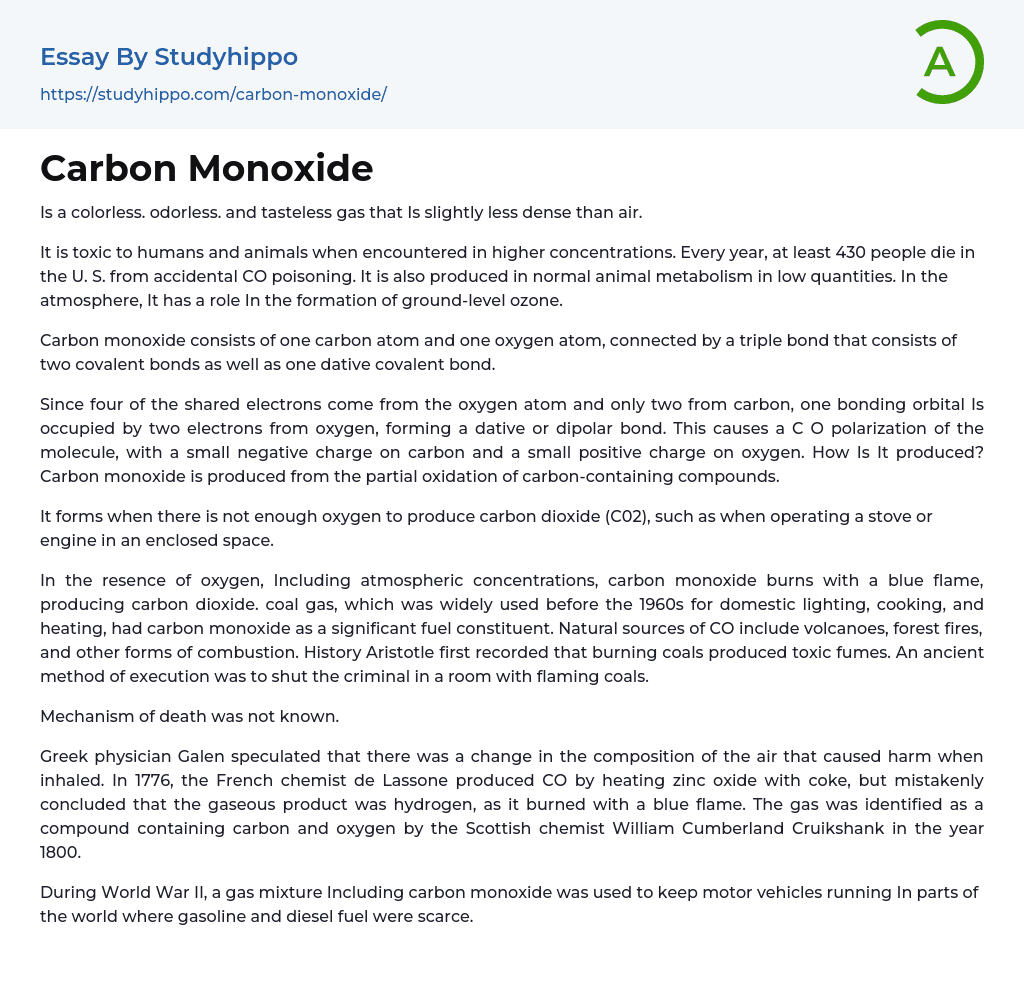Carbon monoxide (CO) is a gas that cannot be seen, tasted or smelled. It is slightly less dense than air and has the potential to be harmful to humans and animals when present in high concentrations. Accidental poisoning from CO causes up to 430 deaths annually in the US. However, this gas is also produced naturally during animal metabolism and contributes to ground-level ozone formation in the atmosphere. CO consists of one carbon atom and one oxygen atom connected by a triple bond resulting in polarization with a small negative charge on carbon and a small positive charge on oxygen. Lack of sufficient oxygen for partial oxidation of carbon-containing compounds generates CO, such as inside enclosed spaces with stoves or engines. When there's enough atmospheric oxygen concentration alongside it, CO burns with blue flame
...s that produce carbon dioxide. Aristotle observed harmful fumes generated by burning coal containing significant amounts of CO as fuel constituent used for capital punishment in ancient times; however, Galen speculated that breathing air with varying composition could be hazardous since he was unsure about the exact reason for death caused by those fumes back then. In 1776, French chemist de Lassone mistakenly identified hydrogen as carbon monoxide - produced from heating coke and zinc oxide because of its blue flame.William Cumberland Cruikshank, a chemist from Scotland, identified carbon monoxide as a compound made up of carbon and oxygen in 1800. During World War II, a mixture of gases that included carbon monoxide was used to keep cars running in areas where diesel and gasoline were scarce.
- Distillation essays
- Amylase essays
- Magnesium essays
- Acid essays
- Calcium essays
- Carbohydrate essays
- Carbon essays
- Chemical Bond essays
- Chemical Reaction essays
- Chemical reactions essays
- Chromatography essays
- Concentration essays
- Copper essays
- Diffusion essays
- Ethanol essays
- Hydrogen essays
- Organic Chemistry essays
- Osmosis essays
- Periodic Table essays
- Ph essays
- Salt essays
- Sodium essays
- Titration essays
- Atmosphere essays
- Biodiversity essays
- Coral Reef essays
- Desert essays
- Earth essays
- Ecosystem essays
- Forest essays
- Lake essays
- Natural Environment essays
- Ocean essays
- Oxygen essays
- Rainbow essays
- Sea essays
- Soil essays
- Volcano essays
- Water essays
- Wind essays




